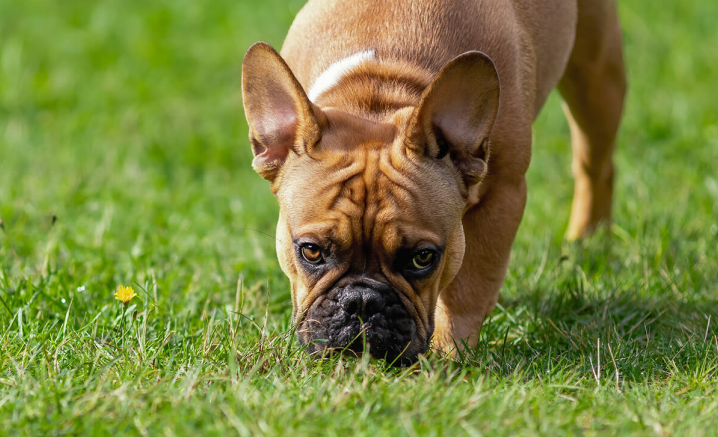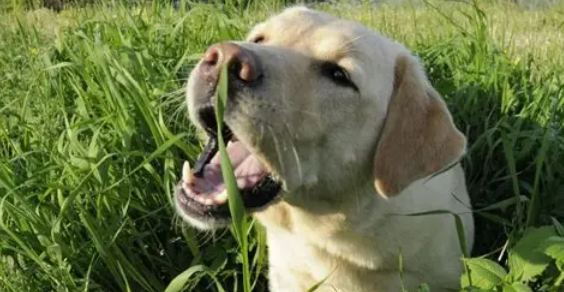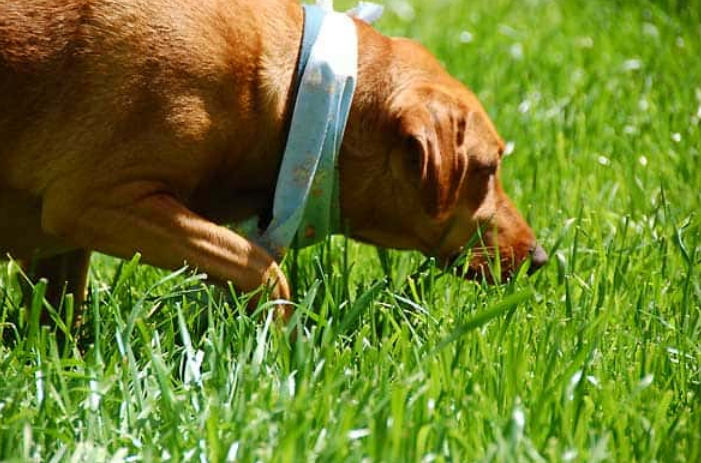Why is My Dog Eating Grass: Reasons, Dangers, and How to Help
Posted in CategoryAgriculture Discussion-
 Sdfsdf 3 days ago
Sdfsdf 3 days ago
If you have ever taken your dog on a walk and noticed it abruptly stop to eat grass, you are not alone. This behavior often confuses many pet owners who wonder whether it is harmless or a cause for concern. Eating grass is not unusual for dogs, and while it is normal in many cases, it can sometimes indicate underlying issues.
We are going to discuss the reasons why dogs eat grass, the potential dangers, when to visit the vet, and how to control the behavior to ensure your furry friend is healthy and happy.
Reasons Why Dogs Eat Grass
Dogs can chew grass due to a variety of reasons, some of which are instinctual, others are nutritional, and others are merely behavioral. Knowing these reasons can help you determine whether your dog has a harmless habit or requires attention.
1. Instinctual Behavior
Domesticated dogs have much in common with their wild relatives. An example is wolves, which ate their prey animals intact (including the stomach contents that contained partially digested vegetation). This instinctive exposure to vegetation could be the reason why dog eating grass still exists today. Probably it is an old instinct that has been handed down.
2. Dietary Needs
Grass has fiber and trace nutrients which help in digestion. Dogs that do not receive sufficient fiber in their diets will instinctively resort to grass to satisfy the need. It is a good idea to check the diet of your dog if you observe that it is grazing. It can be assisted by adding more vegetables high in fiber or specially manufactured kibble. Research about dog food so that you can make sure that what your dog eats satisfies all its needs.
3. Upset Stomach Relief
Dogs want grass when they are nauseous. Grass may irritate the stomach lining and cause vomiting, which is a temporary solution. Although this is not harmful, recurrent instances can be an indicator of digestive discomfort. To understand the health of a dog's digestion, it is a good idea to refer to the expert sources or to the vet.
4. Boredom or Anxiety
In some cases, grass munching is not about health, but about feelings. Dogs that are left unattended or those that lack exercise can graze as a form of self-calming. Increasing mental stimulation and playtime can decrease this behavior.
Find out how to have fun with dogs to keep your dog entertained.
5. Habit Formation
Dogs are also likely to continue to eat grass just because it has become a routine for them, just as humans do with snacking. After they have tried it and nothing bad has happened to them, they can make it a part of their day-to-day life.
6. Pica Condition
Pica is associated with dog eating grass- a condition in which pets eat non-food substances as a result of deficiencies or medical issues. If you suspect this, you should seek the advice of your veterinarian.
Should you worry about your dog eating grass?
In most of cases, occasional chewing of grass is not something to worry about. Nevertheless, close attention may be paid to frequent or excessive grazing. Keep in mind:
● There should be no pesticides, herbicides, or fertilizers on grass. These are harmful chemicals that may damage your dog.
● Frequent vomiting following the consumption of grass can indicate some health problems.
● Excessive consumption of grass may be a sign of stress, boredom, or nutritional deficiency.
Why Did My Dog Eat Grass and Throw It Up?


Dogs often vomit after grazing, and this can be frightening to the owner. This normally occurs due to the irritation of the stomach lining by the grass, which causes a purge. Some dogs intentionally eat grass to induce vomiting when they feel unwell, while others simply overeat and end up vomiting as a result.
The vomiting is not necessarily dangerous, but recurrent vomiting is a warning sign. It can indicate such conditions as gastritis or pancreatitis. When your dog throws up grass regularly, watch their hydration and energy levels. Know more about dogs throwing up undigested food to identify the difference between normal and worrying cases.
Risks of Dog Eating Grass
Occasional nibbling is not harmful enough, but here are some risks of a dog eating grass.
Chemical Exposure
Dogs can be exposed to toxins from grass that has been treated with lawn chemicals. Grazing should always be supervised and should only be done in safe and untreated places.
Vomiting and Diarrhea

Some dogs have vomited or gotten diarrhea after consuming grass. Mild cases can be treated by temporary replacement of a bland diet in dogs, but chronic symptoms require veterinary attention.
Digestive Blockages
Long blades of grass that are swallowed without chewing may form clumps that obstruct the digestive tract. This can lead to constipation, abdominal pain or even life threatening obstructions. Dog laxatives can work in mild cases, but in severe cases, immediate treatment is necessary.
Is It OK to Let Your Dog Eat Grass?

In moderation, yes. The majority of veterinarians do not think that there is anything wrong with allowing your dog to nibble grass every now and then, provided it is not covered with chemicals. Ideally, you should only allow grazing in your own yard where you are able to regulate environmental factors.
Nevertheless, it is better to restrict their consumption. Excess grass may upset the stomach, cause vomiting or even blockages when consumed in large quantities. When the habit of your dog becomes common, it can be associated with allergies to dog food or deficiency of nutrients, and it can be worth considering a diet.
Should you take your Dog to the Vet for Eating Grass?
The occasional snack of grass does not require a visit to the vet by most dogs. But you should consult with a professional if:
● After eating grass, your dog vomits several times.
● Diarrhea lasts longer than 24 hours.
● They exhibit symptoms of lethargy or loss of appetite.
● Grazing is compulsive or routine.
● You think they have eaten grass that has been chemically treated.
Veterinary examination is important in such situations to eliminate severe issues. In some cases, the symptoms are similar to those of dog stomach problems and it is always safe to seek professional advice.
Puppies and Grass
Puppies are inquisitive creatures and they tend to chew grass just to see what it tastes like. This is usually not harmful in small quantities. But the digestive system of puppies is more delicate and excessive consumption of grass can cause diarrhea or vomiting.
To deter this, give interesting chew toys and set meals with smart feeders. Such devices as the WOpet Smart Pet Feeder can help to provide regular feeding, eliminating the desire to snack on grass.
Preventing Excessive Grass Eating
If your dog is grazing too often, try these strategies:
● Improve the Diet: Add high-fiber foods such as pumpkin or carrots. Manage sensitivities with hypoallergenic diets that are dog food allergies.
● Enrichment: Combat boredom by adding physical activity and puzzle toys. Learn how to make dogs active.
● Hydration: Your dog must be allowed to drink as much fresh water as possible. Compliance with the hydration rules in dogs may assist with digestion and reduce undesirable grazing.
● Safe Grazing Spaces: Have pet-safe grass areas in or around untreated outdoor spaces.
● Regular Feeding: Feeding regularly will prevent snacking because of hunger. The quantity and time of portions can be controlled using smart feeders.
Smart Feeding Solutions
Most of the time, dogs eat grass due to hunger. Automated feeders such as the WOpet Smart Pet Feeder can help control this habit. They feed your dog the right food at the right time and in the right amounts, which will keep them full and less likely to graze.
In addition to convenience, smart feeders encourage a healthy diet, which is useful in maintaining a healthy digestive system and avoiding boredom or hunger-related habits.
Final Thoughts
A dog eating grass is usually harmless and instinctive, but it’s important to watch for warning signs like frequent vomiting, diarrhea, or constant grazing, which may signal health concerns. Creating a safe environment, offering a balanced diet, and keeping your pup active can reduce the behavior. With the right care and smart feeding tools, you can manage this habit while ensuring your furry friend stays healthy and happy.
Source:Why is My Dog Eating Grass: Reasons, Dangers, and How to Help
